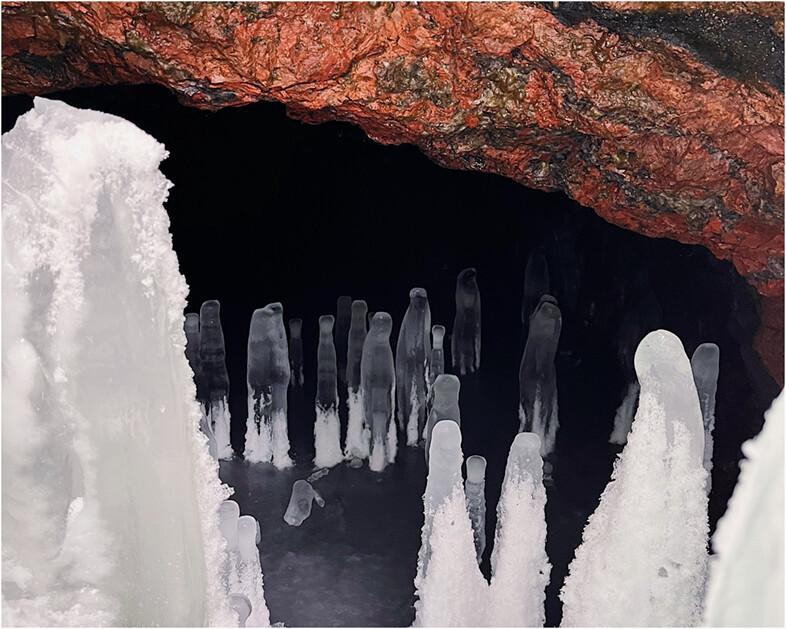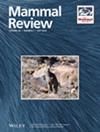海绵状蝙蝠冬眠管理的成本与收益平衡
IF 4.4
2区 生物学
Q1 ECOLOGY
引用次数: 2
摘要
控制洞穴和矿井的小气候作为一种保护和管理受白鼻综合征(WNS)摧残的冬眠蝙蝠种群的策略,重新引起了人们的兴趣。WNS会给冬眠的蝙蝠造成能量失衡,最终导致饥饿,因此一些研究人员和管理机构建议修改冬眠动物,以满足历史上认为的最小化冬眠期间能量消耗的条件。改造冬眠作为一种管理策略具有很大的潜力,但对冬眠生理和行为的过度简化的看法导致成本和收益的不完全平衡。目前在美国实施的冬眠操作具有很高的风险,因为蝙蝠使用的洞穴系统具有容易陷入生态陷阱的系统的所有特征。我们提出了一个基于个体的蝙蝠冬眠能量学模型,证明了依赖于过度简化的生理和环境条件描述来设计和实施冬眠操作的风险。当环境条件的实际变化水平包括在内时,所提出的“目标”小气候对冬眠蝙蝠来说是非常危险的。许多或大多数冬眠地的现实自然条件意味着,对小气候的改变可能会为冬眠的蝙蝠带来适度的能量节约,但可能会使它们长期暴露在健康水平大幅下降的环境中。由于产生生态陷阱和负面能量后果的风险,我们通常敦促在修改蝙蝠使用的地下场所时要谨慎,并特别建议,如果修改冬眠,主要目标应该是最大化空间梯度和最小化环境条件(温度和湿度)的时间变异性,而不是以达到特定的冬至温度为目标。本文章由计算机程序翻译,如有差异,请以英文原文为准。

Balancing costs and benefits of managing hibernacula of cavernicolous bats
- Manipulation of microclimates in caves and mines has gained renewed interest as a conservation and management strategy for populations of hibernating bats devastated by white-nose syndrome (WNS). WNS creates an energy imbalance for hibernating bats and ultimately leads to starvation, so some researchers and management agencies suggest modifying hibernacula to meet conditions historically thought to minimise energy expenditure during hibernation.
- Modifying hibernacula has great potential as a management strategy, but an oversimplified view of hibernation physiology and behaviour leads to an incomplete balancing of costs and benefits. Hibernaculum manipulations, as currently being implemented in the USA, carry high risk because cave systems used by bats have all the hallmarks of systems prone to falling into ecological traps.
- We present an individual-based model of bat energetics during hibernation, demonstrating the risk of relying on oversimplified descriptions of physiology and environmental conditions to design and implement hibernaculum manipulations. When realistic levels of variation in ambient conditions are included, proposed ‘target’ microclimates are very risky for hibernating bats.
- Realistic natural conditions in many or most hibernacula mean that modifications to the microclimate may produce modest energy savings for hibernating bats while potentially exposing them to substantial long-term fitness declines.
- Due to the risks of creating ecological traps and negative energetic consequences, we generally urge caution when modifying subterranean sites for bat use, and specifically suggest that if hibernacula are modified, the primary goal should be to maximise spatial gradients and minimise temporal variability in ambient conditions (temperature and humidity), as opposed to aiming to achieve a specific midwinter temperature.
求助全文
通过发布文献求助,成功后即可免费获取论文全文。
去求助
来源期刊

Mammal Review
生物-动物学
CiteScore
12.20
自引率
4.10%
发文量
29
审稿时长
>12 weeks
期刊介绍:
Mammal Review is the official scientific periodical of the Mammal Society, and covers all aspects of mammalian biology and ecology, including behavioural ecology, biogeography, conservation, ecology, ethology, evolution, genetics, human ecology, management, morphology, and taxonomy. We publish Reviews drawing together information from various sources in the public domain for a new synthesis or analysis of mammalian biology; Predictive Reviews using quantitative models to provide insights into mammalian biology; Perspectives presenting original views on any aspect of mammalian biology; Comments in response to papers published in Mammal Review; and Short Communications describing new findings or methods in mammalian biology.
 求助内容:
求助内容: 应助结果提醒方式:
应助结果提醒方式:


